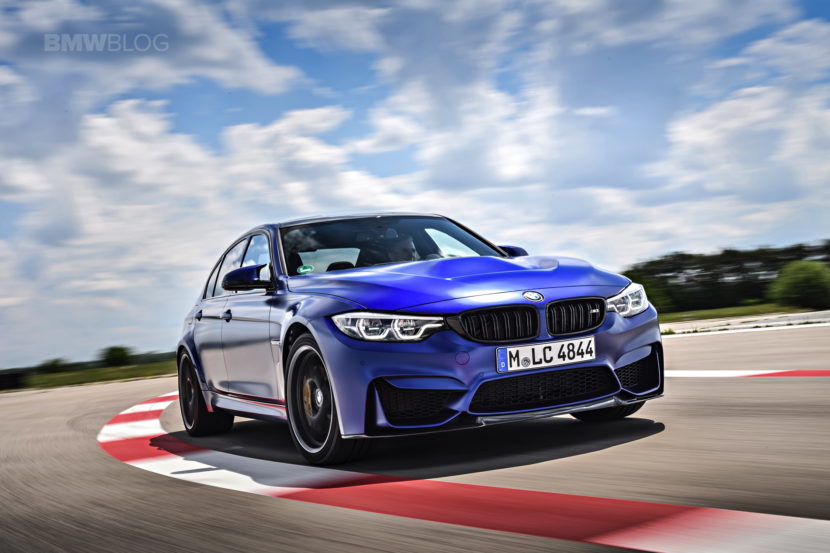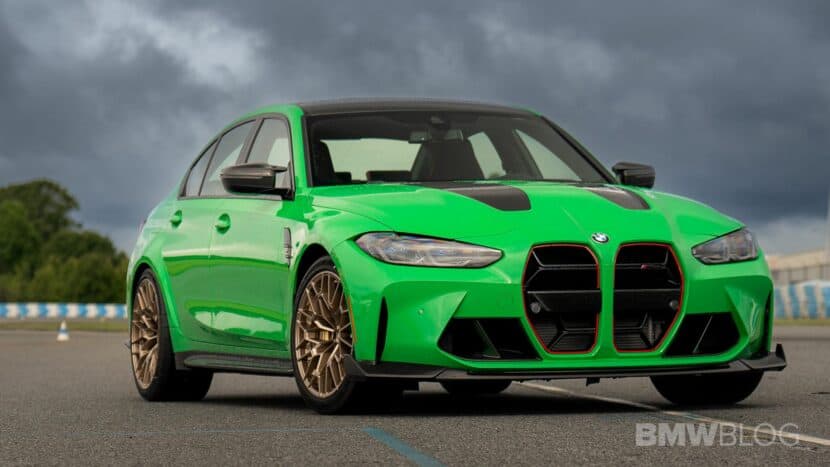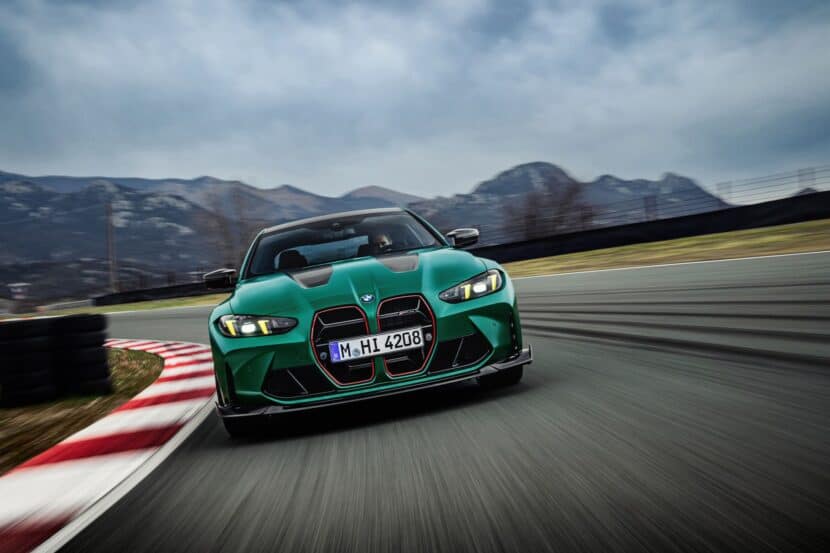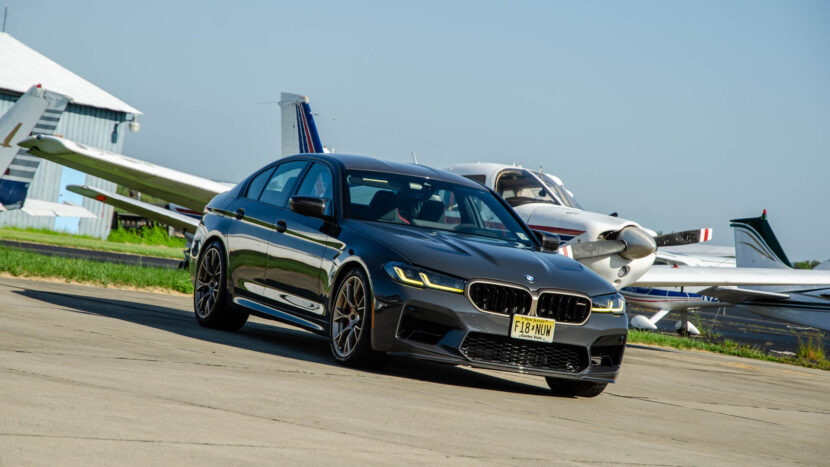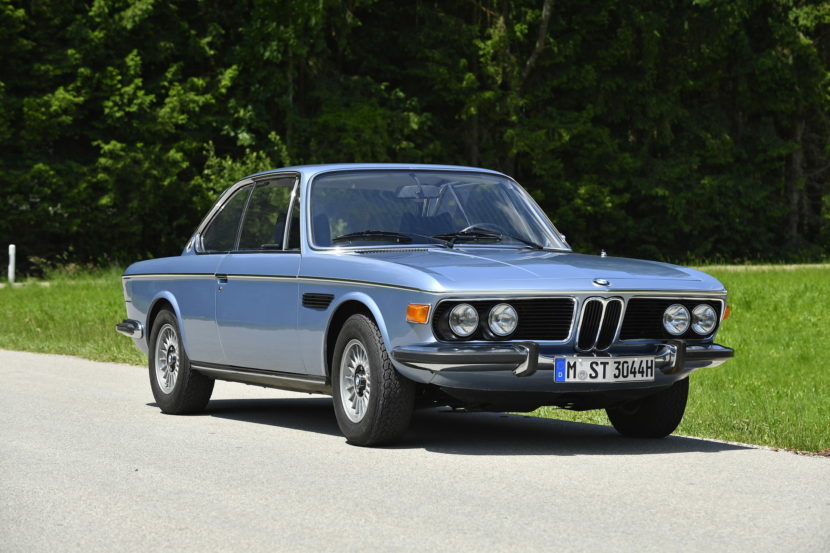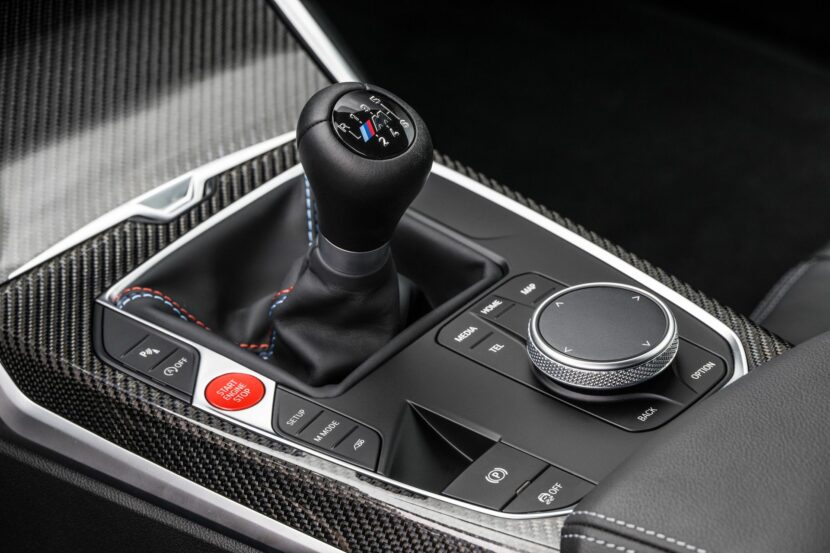BMW M CS models today represent the second-highest rung on the brand’s performance ladder. Imbued with “Competition Sport” badging, the cars feature lightweight components, tuned-up engines, and plenty of other unique touches. With the recent release of the 2025 BMW M4 CS (G82), the CS lineup grows larger still. Here’s how we rate every car in the BMW M CS lineup.
F80 M3 CS
Technically the second BMW M3 CS ever, the F80 M3 CS arrived in 2018, lighter and faster than the former range-topping Competition model. Power is moderately increased from 444 to 453 horsepower. The S55 engine is seriously torqued up, though, making 443 pound-feet instead of 406 in base and Competition models. This is combined with a roughly 100-pound weight savings over the regular model via CFRP body panels, a lighter exhaust system, unique wheels, and more.
While the F80 M3 CS is a blast to drive, the bottom line is that the competition is stout. The G80 M3 CS simply outperforms the old one in almost every conceivable metric. The F80 gets points for style and rear-wheel drive, but at the end of the day, performance is what counts the most for these models. We also wish the F8X CS models had Comfort Access keyless entry.
G80 M3 CS
The G80 M3 CS carries the mantle well, adding xDrive all-wheel drive and 40 horsepower to the regular M3 Competition. Now making 543 horsepower, the car out-accelerates even its contemporary CSL counterpart, shooting from zero to 60 mph in 3.2 seconds. Retuned steering offers better communication and represents a “serious step up” (according to one BMW Performance Driving instructor) from the Competition models, too.
The G80 has its fair share of subjective compromises, though. The sweet dual-clutch from the F80 is replaced by a traditional (albeit very good) automatic transmission. It’s heavier than the F80 – despite weighing an alleged 75 pounds less than the G80 M3 Competition. However, superior performance, better steering feel, and a noticeably better exhaust note make it an overall better pick than its predecessor. Shame about the grille, though.
F82 M4 CS
The F82 M4 CS was the first of the contemporary CS models. It debuted in 2017 and slotted right below the M4 GTS but above the M4 Competition as a balance between the two. The CS borrowed cool tech like OLED taillights, an aero kit like a carbon gurney flap and front splitter, and CFRP body panels from the GTS. But, despite lacking Comfort Access, it was still capable as a daily driver, thanks to a usable (ish) back seat and more street-friendly ride height and suspension tuning.
While the differences between the F82 and F80 CS models largely boil down to stylistic minutia, the M4 CS is technically the higher-performing model. It’s slightly lighter than the M3. On the same track with the same driver, the M4 CS should be faster – as evidenced by the 7:35 Nürburgring lap time compared to the 7:38 the M3 CS put down. While the more limited production of the M3 CS makes it more desirable in some circles, we think the M4 CS is kind of the one you want.
G82 M4 CS
The newest version of the M4 CS is also better than its predecessor. Like the four-door M3, it adds xDrive all-wheel drive – essentially a cheat code for faster acceleration and lap times. It’s 14 seconds quicker around Green Hell than the F82 and its already fire-breathing S58 twin-turbo six has been massaged to 543 horsepower and 479 pound-feet of torque. The usual CS chassis tuning means it’s more responsive and offers better steering feel and feedback than the other M4s that do not sport a CSL in their model name.
The G82 M4 CS is faster than the F82 and G80 CS, so putting it at the top of the food chain feels right. It’s got some additional curb appeal, thanks to cool laser taillights inherited from the mack-daddy CSL model. While it’s a shame neither of the G8X CS cars have rear-wheel drive, the switch to all-wheel drive definitely has obvious performance benefits.
F90 M5 CS
The BMW M5 CS boasts even more unique touches than the M3 and M4 CS models. It benefits from extensive changes from regular M5 models. Ten additional horsepower (for a total of 627 horsepower) under the hood is the least dramatic change. It becomes a four-seater, boasting carbon fiber bucket seats in the front and rear. Unique exterior lighting elements, a vented hood, Gold Bronze wheels, and more. It’s 150ish pounds lighter than the regular M5 and flies from zero to 60 mph in 3.0 seconds or less.
The M5 CS is truly special, which is why it ends up so high on our list. It was the first CS product with the now-ubiquitous yellow-hued daytime running lights. It has unique features you can’t find elsewhere, even in the CS offerings, like Nuburgring-emblazoned headrests. Limited to 1,000 units, it’s destined to be sought after by collectors and enthusiasts for…well, ever.
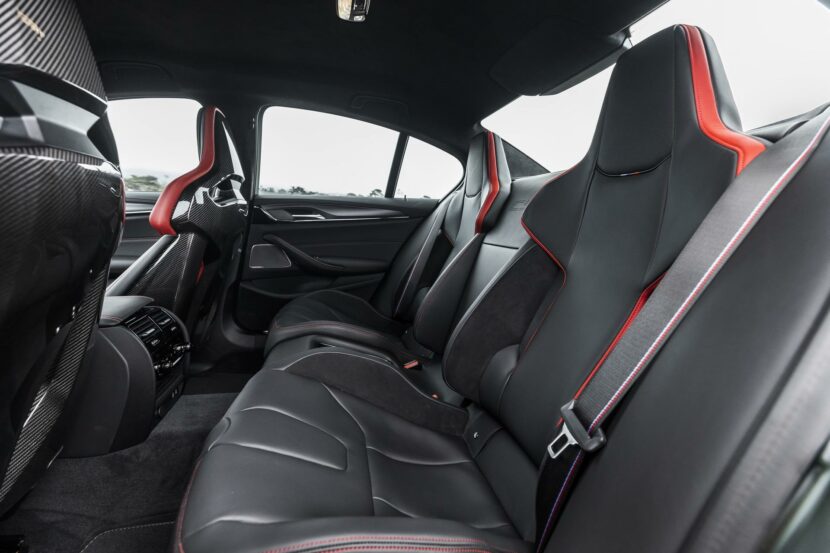
What’s more, the car was universally praised by critics and influencers; it’s nigh-impossible to find a negative take on the car. The last F-chassis CS vehicle to enter production, it kind of stands to reason that it’s also the most well executed. Therefore, the M5 CS is an exhilarating drive, highly exclusive, and aspirational – exactly what a car wearing the CS badge should be.
F87 M2 CS
In many ways, the M5 CS is the pinnacle of what a CS product can be. While its long-running fact sheet is undeniably awe-inspiring, there are aspects to a vehicle that are only really understood when behind the wheel. And that is where the F87 M2 CS excels. Just right sizing, gobs of power and torque, and devilishly attractive styling make it the best CS product to date.
And it should be noted that even on paper, the F87 M2 CS looks pretty dang good. It’s the only CS vehicle available with a manual transmission. It’s the smallest, based on the contemporary 2 Series, and the lightest version thanks to extensive carbon fiber that includes a center console reminiscent of the E46 M3 CSL’s. Finally, it’s quintessentially the BMW enthusiast’s choice: six-speed, six-cylinders, rear-wheel drive. Perhaps the last of the best, but we’ll have to see what the G87 brings us.
Honorable Mentions
E46 BMW M3 CS
BMW makes no reference to any other CS vehicles on their landing page. They say the CS brand pays homage to the E30 M3 Evolution, which featured lighter construction, increased power, and optimized aero and suspension. Sadly, omitted from any mentions is the E46 M3 CS – a delightful middle ground between the M3 CSL and base M3, and it is known simply as the “Competition Package” in the States. With a dedicated track mode, beefier brakes, and completely unique steering, it is the most direct precursor to the CS models we know today.
E9 CS
Finally, there’s the E9 CS, which is technically the true origin of the CS line. You’re probably familiar with the 3.0 CSL from the 1970s; that car came from the 3.0 CS. Itself based on older Neue Klasse models, the 3.0 CS featured lighter construction, more power, and better brakes than its predecessors.
Though BMW claims decades of heritage, the CS plate is really a very recent addition to the brand’s portfolio. While CS-monikered vehicles pop up throughout the brand’s history, they have only become consistent additions in the last decade. We know we’re not the only ones anticipating the G87 M2 CS, the next CS model slated for release. After all, it’s got some mighty big shoes to fill.




